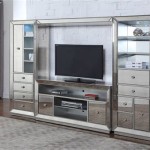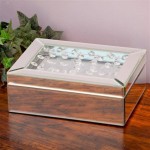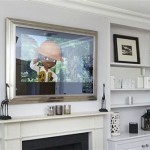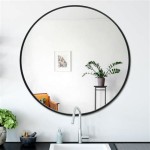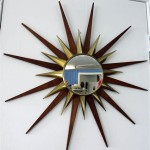Sun Mirror Silver
Sun Mirror Silver refers to a specific type of reflective silver coating applied to glass or plastic substrates designed for use in concentrating solar power (CSP) systems. These mirrors play a crucial role in reflecting and focusing sunlight onto a receiver, which converts the solar energy into thermal energy, ultimately generating electricity or providing process heat.
The effectiveness of a CSP system relies heavily on the reflectivity and durability of the sun mirror silver. High reflectivity maximizes the amount of sunlight directed towards the receiver, increasing energy conversion efficiency. Durability ensures the mirrors maintain their reflective properties over an extended period, despite exposure to harsh environmental conditions such as high temperatures, UV radiation, humidity, and dust.
Several factors contribute to the performance of sun mirror silver. The purity of the silver used is paramount, as impurities can significantly reduce reflectivity. The coating process itself is critical; a uniform and consistent layer of silver is essential for optimal performance. Additionally, a protective backing layer is often applied to enhance the mirror's resistance to environmental degradation and improve its overall lifespan.
The manufacturing process typically involves depositing a thin layer of silver onto a glass or polymer substrate. Various deposition techniques can be employed, including chemical vapor deposition, sputtering, and electroplating. Each method offers distinct advantages and disadvantages in terms of cost, deposition rate, and film quality. Selecting the appropriate technique depends on the specific application and desired performance characteristics.
Chemical vapor deposition (CVD) involves reacting gaseous precursors on the substrate surface to form a thin film. This method offers excellent control over film thickness and uniformity, resulting in high-quality coatings. Sputtering, on the other hand, utilizes a plasma to eject atoms from a target material, which then condense on the substrate. Sputtering is known for its ability to produce dense and durable films.
Electroplating involves depositing silver ions from a solution onto the substrate using an electric current. This method is relatively cost-effective and can be used to coat complex shapes. However, achieving uniform coatings on large substrates can be challenging.
After the silver layer is deposited, a protective backing layer is typically applied. This layer serves several purposes, including protecting the silver from corrosion, increasing its resistance to abrasion, and enhancing its adhesion to the substrate. Common backing materials include copper, titanium dioxide, and various polymers.
The performance of sun mirror silver is typically evaluated based on several key parameters. Reflectivity is a crucial metric, often measured as the percentage of incident sunlight reflected by the mirror. Durability is assessed through various tests, including accelerated weathering tests that simulate prolonged exposure to sunlight, humidity, and temperature fluctuations. Adhesion tests evaluate the strength of the bond between the silver layer and the substrate.
The choice of substrate material also influences the overall performance of the sun mirror. Glass substrates offer excellent optical properties and high durability, but they can be heavy and susceptible to breakage. Polymer substrates, such as acrylic or polycarbonate, are lightweight and more resistant to impact, but they may have lower reflectivity and be more susceptible to degradation from UV radiation.
Recent advancements in sun mirror silver technology focus on improving reflectivity, durability, and cost-effectiveness. Researchers are exploring new materials and coating techniques to enhance the performance of these mirrors. For instance, incorporating nanoparticles into the silver layer has shown promise in increasing reflectivity and improving resistance to environmental degradation.
Furthermore, research efforts are directed towards developing more efficient and environmentally friendly manufacturing processes. Reducing the use of hazardous chemicals and minimizing waste generation are key priorities in the development of sustainable sun mirror silver technologies.
The ongoing development and refinement of sun mirror silver technology are crucial for the continued growth and advancement of CSP technologies. Improved mirror performance leads to higher energy conversion efficiency, reduced costs, and increased sustainability, making CSP a more viable and attractive option for renewable energy generation.
The future of sun mirror silver likely involves further advancements in materials science, coating technologies, and manufacturing processes. These advancements will focus on enhancing reflectivity, durability, and cost-effectiveness, ultimately contributing to the wider adoption and deployment of CSP systems in the global pursuit of clean and sustainable energy sources.

Silver Sun Wall Mirror Artcessorie

Mid Century Modern Sun Silver Wood French Mirror 1960 For At 1stdibs

Round Sun Mirror In Silver Leaf Finish Leopold Hall

30 Sparkle Sunburst Mirror Gems

Vintage Silver Sun Shaped Mirror

30 Glam Starburst Mirror Sunburst Wall Decor Sun Home

Oval Silver Leaf Finish Sun Mirror 1270mm Greenslades Furniture

Abbyson Living Sol Round Silver Wall Mirror Decor Design

Star Wall Mirror Silver Mirrored Glass Frame Round Sun Modern Living Bedroom

Beautiful Silver 31 Glam Clear And Green Gems Sunburst Mirror Starburst Jeweled Wall Sun




